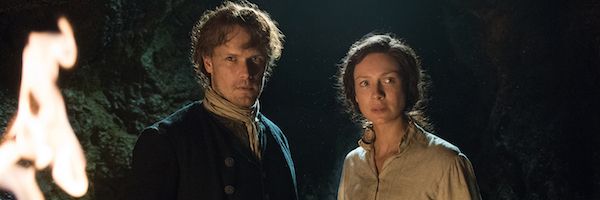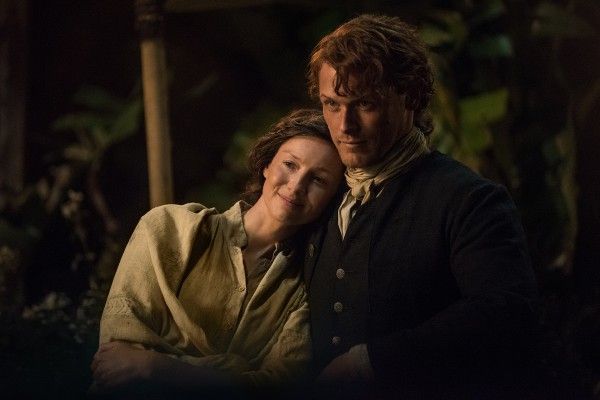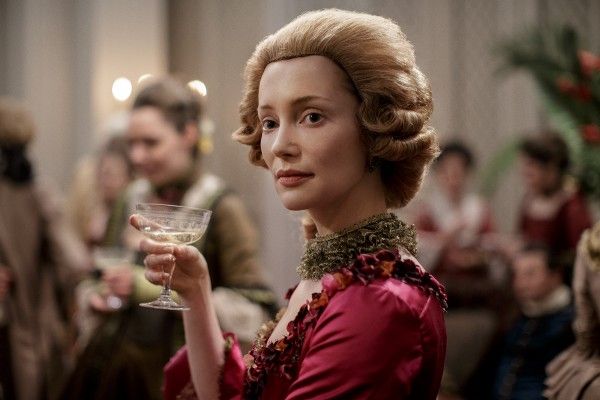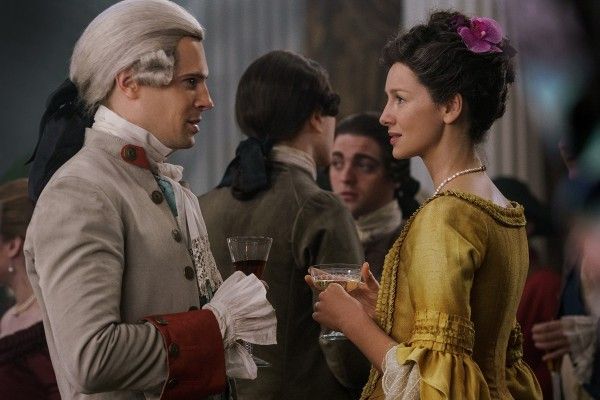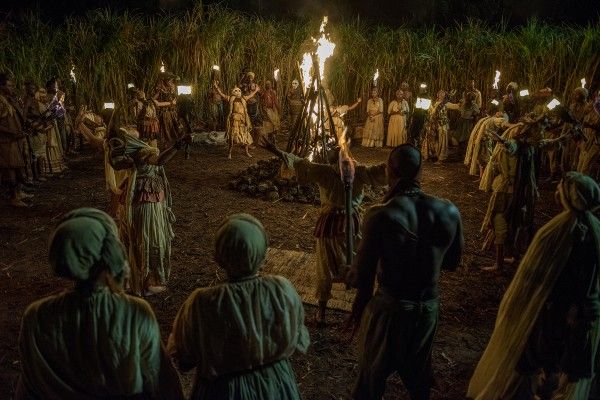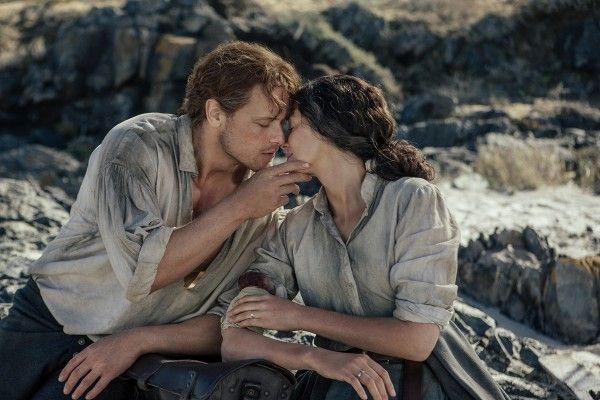As someone who has not read Diana Gabaldon’s Outlander books (I’m a TV watcher only with this one), Season 3 as a whole was mostly an engrossing one. Though it was a struggle to have Jamie and Claire separated for so long, it made it all the more powerful when they were reunited. Jamie’s solo story worked a little better than Claire’s, since it was full of (mostly) Scottish stories, but Claire’s deeply emotional narrative was important to show why she and Jamie are meant to be together, and also allowed us to see Brianna learn the truth about her real father. Claire returned to the past fully prepared (with a wonderful new waterproof outfit full of pockets and penicillin), except for the fact that you can never really prepare for life with Jamie Fraser — something is always brewing.
Some of that ultimately felt repetitive, as Claire and Jamie were reunited only to be torn apart again and again. One of the things that made parts of Season 2 so strong was the fact that the pair could work together (like when they were in Paris), rather than being constantly put in a position of saving each other. Though some of the high-seas adventure story in this season was great fun — and led to one of the show’s best episodes with “Uncharted” — Outlander is never as good when our star-crossed lovers are kept apart. Especially when that’s something that happens over and over in just the final three episodes.
The series clearly had a lot of ground to cover (actual decades) in Season 3, but it really felt rushed once it took off to Jamaica. The penultimate episode, “The Bakra,” was a messy one in the way it reintroduced not only Lord John Grey, Gellis, and the Campbells all at once, but it also shoehorned in a quick subplot about slavery, which found Claire freeing her newly bought slave in front of two other slaves who she then asked to take her back to the mansion. Like I said: messy.
The Lord John Grey plot worked fine — I had a feeling he would pop back up, and he’s a great foil for Black Jack Randall. Whereas Black Jack would always find a way to entrap Jamie and make his life miserable, Lord John is a liberator and a friend. But everything to do with Gellis felt extremely rushed. Who’s the new King of Scotland? What’s with her blood obsession? What was the deal with Jamaica’s answer to Craigh Na Dun? Why would Gellis think Claire would want to stop her from fulfilling the prophesy? Was that sacrifice that the Jamaicans did related at all to the mystical pool or was it just coincidence? Did anyone notice Archibald was murdered? What happened to Mr. Willoughby and Margaret?
The only moment in “Eye of the Storm” that didn’t feel rushed, though, was Jamie talking Claire through his desire for her. Just like in “A. Malcolm,” Outlander slowed down and allowed those two to just have a moment together. Jamie and Claire make a great team, in many different ways, but Season 3 didn’t always allow them to be. It may be an inherent trait of the book series to have Claire and Jamie always moments away from peril (and how many more warrants for his arrest can Jamie have on him? Many more, I’m sure …), but the show is at its best when it allows its characters to actually talk and have quiet moments, rather than always running from one calamity to the next. The adventure scenes are fun, but they become hollow plot points without enough of those strong character moments to ground it (like Willoughby telling his story, or Claire and Jamie looking at pictures of Brianna, or even those moments that Jamie shared with his comrades before their execution).
Week to week, Outlander remained one of the best escapist dramas of the year, but these final two episodes have put a little bit of a damper on its overall effect. There were many things that weren’t necessarily great in Season 3 — the American accents in the 60s, a not fully convincing chemistry between Fergus and Marsali, a lot of the Jamaica subplots, the return of Gellis, Jamie’s story with Geneva, and more — but the show’s gorgeous filming locations, costuming, score, and its central relationship between Jamie and Claire go far in balancing out those narrative blips.
I suppose we can all be thankful, ultimately, that Young Ian has been collected back into Jamie’s care, and that though Claire washed up on another sandy shore nearly dead, she’s also back with Jamie. I have peeked into the future of where Outlander’s story goes, and seen that it spends most of its time in America from here on out. One of the things that first made Outlander such an easy series to get swept up in was its exploration of a particularly fiery (and then tragic) moment in Scottish history, and the way it made sure that Scottishness was integral to the show. The excursion to Jamaica was one thing, but to move the story now to colonial America makes it feel far from home in so many ways. But as long as Jamie and Claire are together — and allowed to really be together — perhaps it doesn’t matter where they land.

